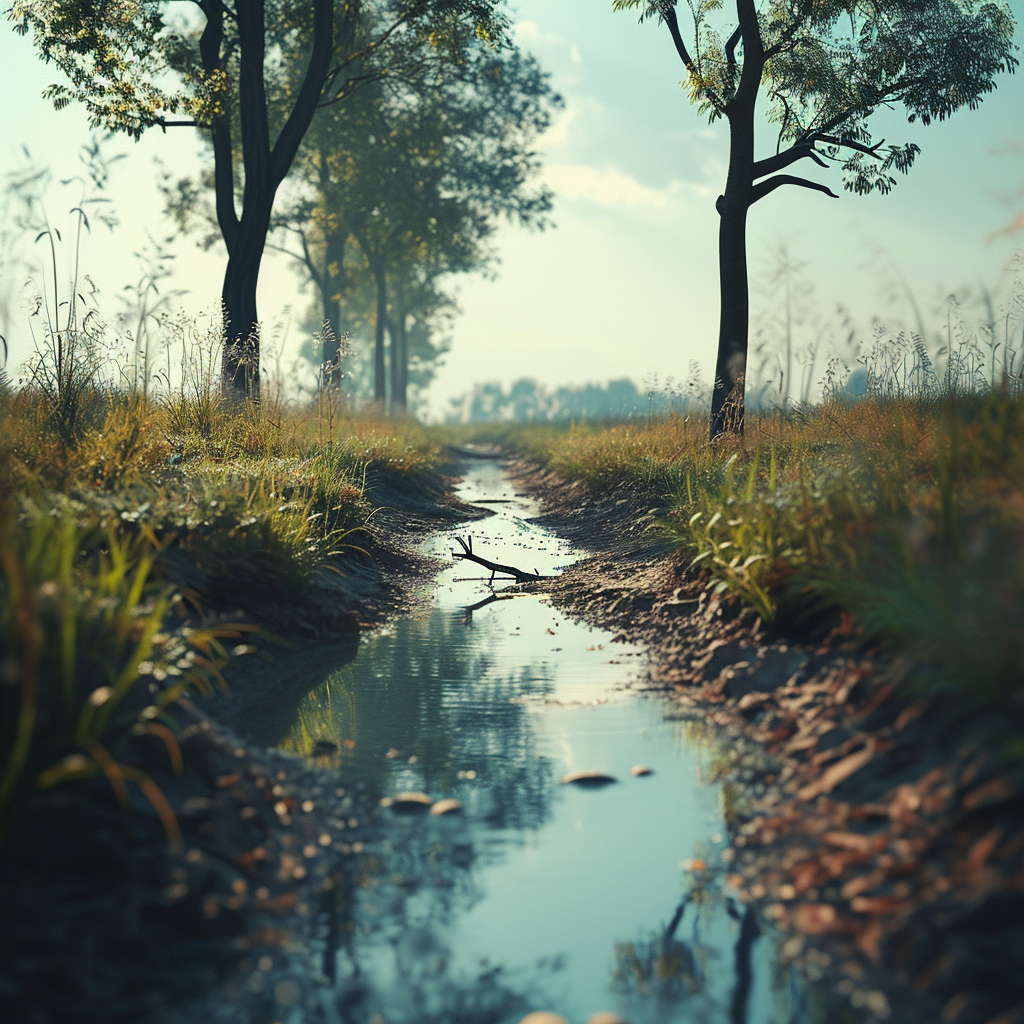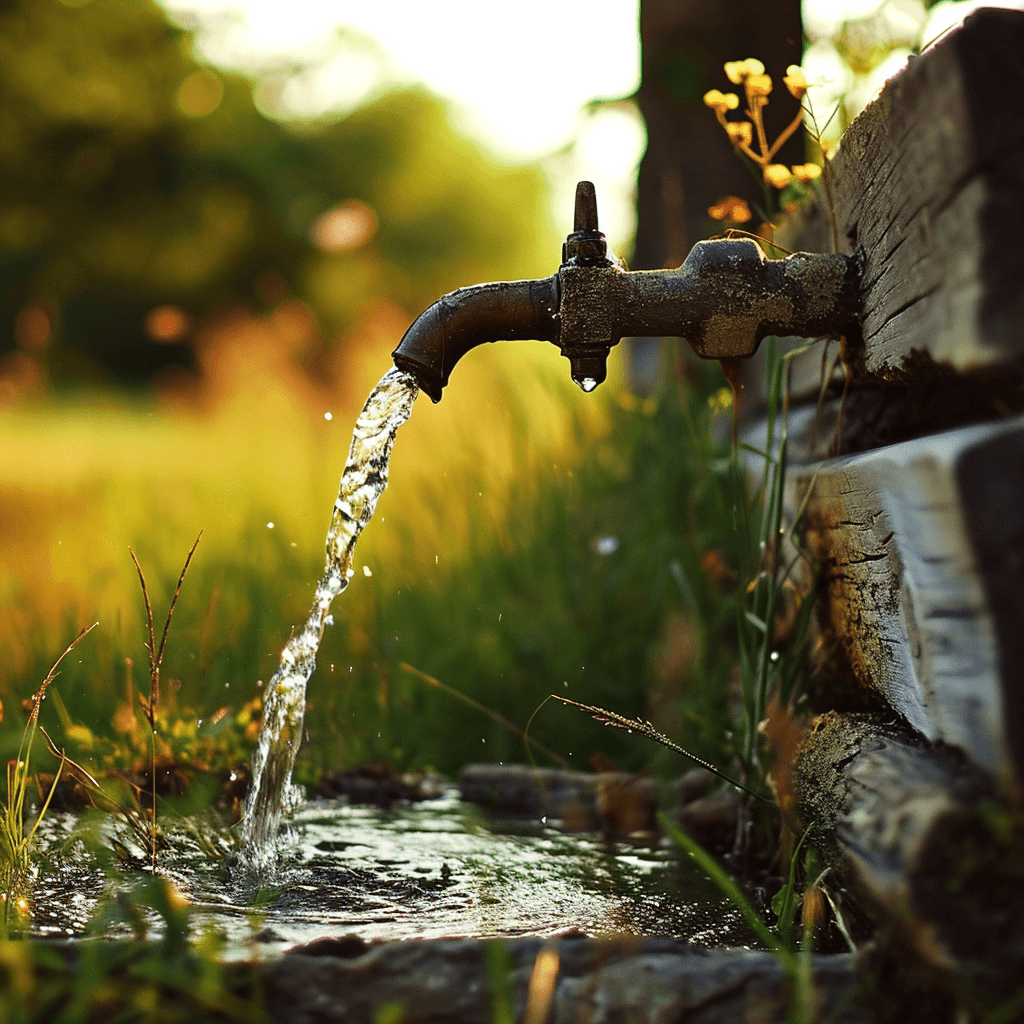So, you’re thinking about living off the grid and becoming more self-sufficient. That’s awesome! One of the first things you’ll need to consider is how you’re going to get water on your land. I mean, we all need water to survive, right? But don’t worry, there are plenty of options available to help you achieve water independence. So… How do you get water on a piece of land?
There are a variety of ways to obtain water on your land, depending on your location and circumstances. You could drill a well, install rainwater harvesting systems, or even explore the possibility of accessing a nearby water source like a stream or river. Each method has its pros and cons, but the good news is that there’s no one-size-fits-all approach. You can tailor your water system to suit your specific needs and resources.
In an upcoming article, we’ll dive deeper into the different methods of achieving water independence on your land and explore the advantages and considerations of each option. We’ll discuss the costs involved, the maintenance required, and the potential benefits of being able to rely on your own water source. So, if you’re curious about how to make this happen, stay tuned because we’ve got you covered! You’ll soon have all the information you need to make an informed decision and pave your way towards water independence.
Understanding Water Independence
Importance of water independence
Water independence refers to the ability to meet your own water needs without relying on external sources. It is a crucial aspect of sustainable living and has a multitude of benefits. By achieving water independence, you can reduce your ecological footprint, save money on water bills, and ensure a steady and reliable water supply, regardless of external factors such as droughts or water restrictions.
Benefits of achieving water independence
There are numerous benefits to achieving water independence on your land. First and foremost, it allows you to have control over your water supply, ensuring that you always have access to clean and safe water. This is particularly important in areas where water scarcity is a concern or during emergencies when water may not be readily available.
Furthermore, achieving water independence helps to conserve local water resources and reduce strain on public water systems. By utilizing alternative water sources and implementing efficient water conservation strategies, you can contribute to the sustainable management of water resources.
Moreover, achieving water independence can lead to financial savings. By reducing or eliminating your reliance on municipal water supplies, you can significantly reduce your water bills. Additionally, the implementation of water conservation strategies, such as utilizing greywater recycling or installing low-flow fixtures, can further reduce water consumption and save you money in the long run.

Exploring Different Water Sources
There are various sources of water that can be used to achieve water independence on your land. Here are some common ones:
Rainwater harvesting
Rainwater harvesting involves collecting and storing rainwater from rooftops or other surfaces. This water can then be used for various purposes, such as irrigation, cleaning, or even drinking water after proper filtration and purification. Rainwater harvesting is a sustainable and cost-effective method that can provide a reliable water supply, especially in areas with abundant rainfall.
Groundwater extraction
Groundwater extraction involves accessing water from underground aquifers through wells or boreholes. This source of water is often naturally filtered and can be of high quality. However, it is crucial to ensure that groundwater extraction is done sustainably to prevent over-extraction and depletion of aquifer resources.
Surface water collection
Surface water collection involves capturing water from natural sources such as rivers, streams, or lakes. This water can be used for various purposes, including irrigation or as a backup water supply during times of scarcity or drought. Proper filtration and purification methods must be employed to ensure the safety and quality of surface water.
Water desalination
Water desalination is the process of removing salt and other impurities from seawater to make it suitable for drinking and irrigation. This method is particularly beneficial for coastal areas with limited freshwater resources. However, desalination can be energy-intensive and expensive, making it less feasible for certain applications.
Calculating Water Needs
To achieve water independence, it is essential to determine your daily water requirements and estimate water usage for different activities. This will help you design an efficient water storage and distribution system.
Determining daily water requirements
Estimating your daily water requirements is a crucial step in achieving water independence. The average person needs about 2-4 gallons (8-16 liters) of water per day for drinking, cooking, and personal hygiene. However, this can vary depending on factors such as climate, physical activity, and individual needs.
Estimating water usage for various activities
In addition to basic needs, it is essential to consider water usage for various activities such as bathing, laundry, and outdoor irrigation. Installing water-efficient fixtures and appliances, such as low-flow showerheads and washing machines, can help reduce water consumption in these areas.
Designing Water Storage Systems
Designing an effective water storage system is crucial for maintaining a steady and reliable water supply. Here are some considerations:
Choosing appropriate storage containers
When it comes to water storage, it is essential to choose containers that are safe, durable, and suitable for the intended use. Options include large water tanks, barrels, or underground cisterns. Make sure to select materials that are food-grade and resistant to corrosion or contamination.
Determining storage capacity
The storage capacity of your water system depends on factors such as the size of your household, water usage, and anticipated periods of low rainfall. It is recommended to have a minimum of three days’ worth of water stored, with some experts suggesting up to two weeks’ worth for emergencies or drought situations.
Implementing filtration and purification systems
To ensure the quality and safety of stored water, it is essential to implement filtration and purification systems. This can involve using filters, UV sterilization, or chemicals such as chlorine or iodine. Regular maintenance and testing of these systems are necessary to ensure their effectiveness.
Implementing Efficient Water Conservation Strategies
Water conservation plays a vital role in achieving water independence. Here are some strategies you can implement:
Installing low-flow fixtures
Replacing old fixtures with low-flow options can significantly reduce water consumption without sacrificing performance. Install low-flow showerheads, faucets, and toilets to maximize water savings in your home. These fixtures are designed to maintain adequate water pressure while using less water.
Utilizing greywater recycling
Greywater refers to lightly used water from sources such as showers, sinks, or washing machines. Instead of letting this water go to waste, it can be collected and treated for reuse in activities such as irrigation or toilet flushing. Implementing a greywater recycling system can significantly reduce overall water consumption on your land.
Practicing xeriscaping
Xeriscaping is a landscaping method that focuses on using drought-tolerant plants and water-efficient irrigation techniques. By designing your landscape to require minimal water, you can reduce outdoor water consumption while maintaining an attractive and sustainable garden.
Maintaining Water Quality
Maintaining water quality is crucial to ensure the health and safety of your water supply. Here are some important considerations:
Regular testing and monitoring
Regularly test your water for contaminants, such as bacteria or chemicals, to ensure its quality. This can be done through home testing kits or by sending samples to a certified laboratory. Monitoring your water quality ensures early detection of any potential issues.
Treating water for contaminants
If contaminants are found in your water supply, it is essential to take appropriate actions to treat and purify the water. This can involve using filtration systems, UV sterilization, or chemical treatment methods. Consultation with water treatment professionals can help you determine the most effective treatment options for your specific needs.
Addressing potential health risks
Certain water sources, such as groundwater, may pose health risks due to naturally occurring contaminants or pollutants. It is crucial to educate yourself about the potential risks and implement appropriate measures to mitigate them. This can include regular testing, understanding local regulations, and employing filtration or treatment systems specific to those risks.
Managing Water Distribution Systems
Proper management of your water distribution system is essential for maintaining a reliable water supply. Here are some considerations:
Developing a well-designed plumbing network
Design your plumbing network to minimize water waste and ensure efficient water flow. This involves proper pipe sizing, reducing leaks, and avoiding long runs or excessive bends that can lead to pressure loss or inefficiency. Consulting with a professional plumber can help you design an optimal system for your needs.
Implementing water pressure management
Maintaining appropriate water pressure throughout your system is crucial to ensure efficient water usage and prevent damage to fixtures or pipes. Install pressure regulators or adjust valves to maintain the recommended pressure range for your appliances and fixtures.
Ensuring proper water flow and distribution
To maximize the effectiveness of your water distribution system, ensure that water flows evenly to all areas of your property. This can involve properly sizing pipes, avoiding dead ends, and implementing valves or zone control systems for efficient water distribution.
Overcoming Challenges
Achieving water independence on your land may come with challenges that need to be addressed. Here are some common challenges and possible solutions:
Dealing with drought situations
During periods of drought or water scarcity, it may be necessary to implement additional measures to conserve water or find alternative water sources. This can include increasing rainwater harvesting, reducing outdoor irrigation, or exploring water-sharing options with neighboring properties.
Managing fluctuating water availability
In some areas, water availability may fluctuate seasonally or due to changes in groundwater levels. Implementing water storage systems with adequate capacity can help mitigate these fluctuations and ensure a steady supply during periods of low water availability.
Ensuring long-term sustainability
Achieving water independence is a long-term goal that requires ongoing effort and maintenance. Regularly monitor and maintain your water systems, update them as needed, and stay informed about new technologies or strategies that could further improve your water independence.

Educating Others
Sharing knowledge and experiences is crucial for promoting water conservation and achieving water independence on a larger scale. Here are some ways you can educate others:
Sharing knowledge and experiences
Participate in community events or workshops to share your experiences and knowledge about achieving water independence. By sharing your successes and challenges, you can inspire and educate others who are interested in adopting similar practices.
Promoting water conservation awareness
Use various platforms, such as social media or local events, to promote water conservation and the importance of water independence. Share tips, resources, and success stories to encourage others to take action and make a positive impact on their water usage.
Conclusion
Achieving water independence on your land is an important step towards sustainable living. By understanding different water sources, calculating your water needs, designing efficient systems, and implementing water conservation strategies, you can ensure a reliable and sustainable water supply. Overcoming challenges and educating others about water conservation can further contribute to the long-term goal of achieving water independence. Remember, every drop counts, and your efforts to conserve and manage water can make a significant difference in ensuring a sustainable future. So start today and take control of your water usage for a better tomorrow.




